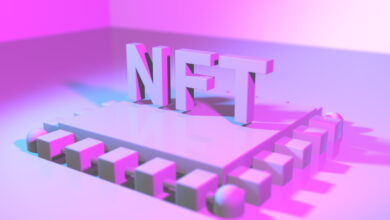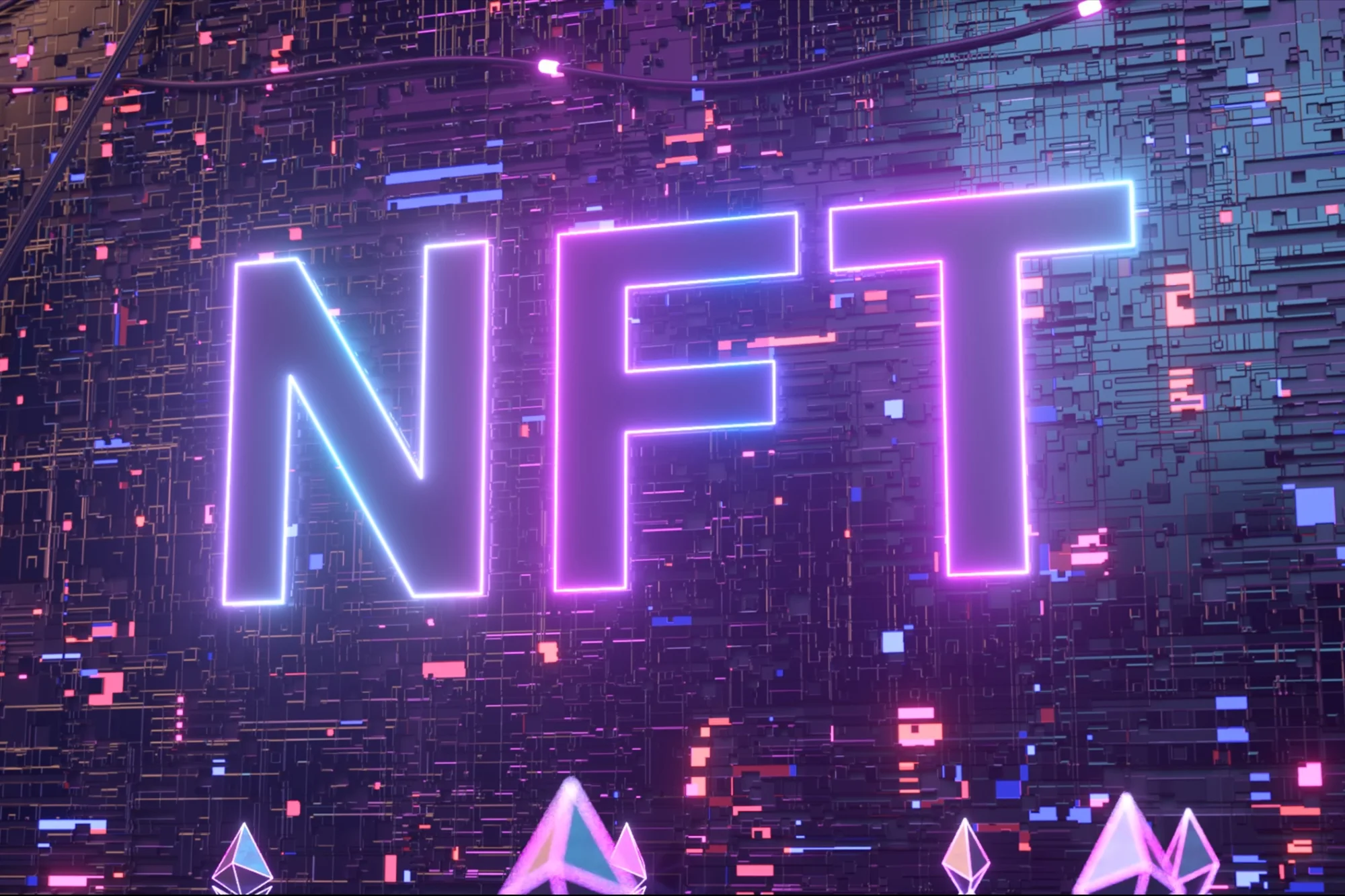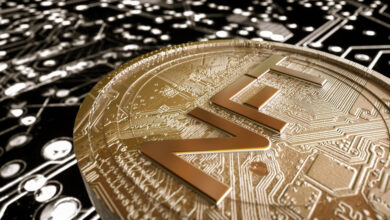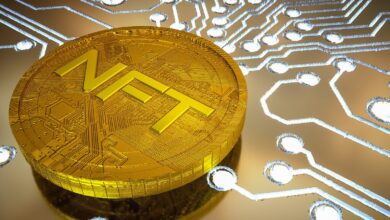Buy NFT Crypto Wallets 12 Best Options That Never Fail
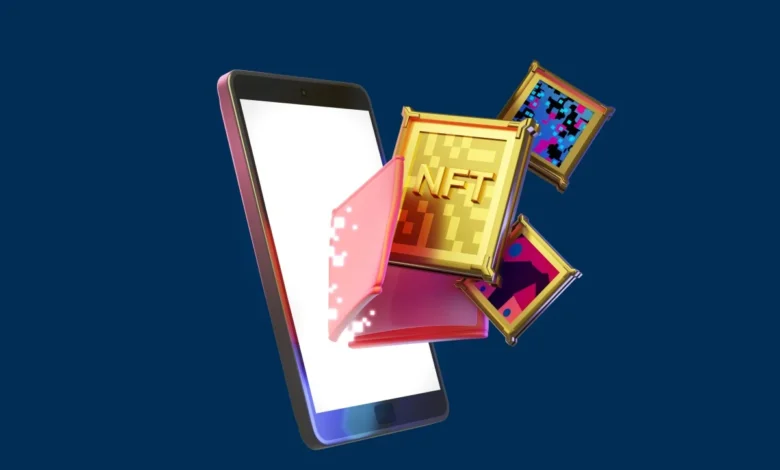
The explosive growth of NFT crypto wallets has revolutionized how digital collectors store, manage, and trade their valuable non-fungible tokens. As the NFT market continues to mature in 2025, choosing the right crypto wallet for NFTs has become more critical than ever. Whether you’re a seasoned collector or just starting your digital asset journey, selecting a reliable and secure wallet can make the difference between protecting your investments and losing them to security breaches.
When you buy NFT crypto wallets, you’re not just purchasing a storage solution – you’re investing in the security and accessibility of your digital assets. The best NFT wallets offer a combination of robust security features, user-friendly interfaces, and broad compatibility with popular NFT marketplaces like OpenSea, Rarible, and SuperRare. These wallets serve as your gateway to the decentralized world of digital art, gaming assets, and collectibles.
The landscape of NFT wallet options has expanded dramatically, with both hardware wallets and software wallets offering unique advantages. Hardware wallets provide cold storage security, keeping your private keys offline and away from potential hackers. Meanwhile, software wallets offer convenience and seamless integration with decentralized applications (dApps) and NFT platforms. Understanding the differences between these options is crucial for making an informed decision.
Security remains the paramount concern when choosing secure NFT wallets. With high-profile hacks and scams plaguing the crypto space, the importance of selecting wallets with proven track records cannot be overstated. The crypto wallet comparison in this guide examines security features, supported blockchains, user experience, and community trust to help you identify the most reliable options available today.
This comprehensive guide explores the 12 best cryptocurrency wallets specifically optimized for NFT storage and trading, providing detailed insights into their features, pros, cons, and ideal use cases to help you make the perfect choice for your digital asset management needs.
What Are NFT Crypto Wallets and Why Do You Need One
NFT crypto wallets are specialized digital storage solutions designed to hold, manage, and interact with non-fungible tokens across various blockchain networks. Unlike traditional cryptocurrency wallets that primarily focus on fungible tokens like Bitcoin or Ethereum, NFT wallets are optimized to display, organize, and transfer unique digital assets, including artwork, collectibles, gaming items, and domain names.
The fundamental purpose of an NFT storage solution extends beyond simple custody. These wallets serve as your interface to the broader Web3 ecosystem, enabling you to connect with NFT marketplaces, participate in decentralized finance (DeFi) protocols, and interact with blockchain-based applications. When you buy crypto wallets designed for NFTs, you’re essentially purchasing a key to the digital ownership revolution.
Secure NFT wallets employ various security mechanisms to protect your valuable digital assets. They store your private keys – the cryptographic codes that prove ownership of your NFTs – either locally on your device or on specialized hardware. This ownership model eliminates the need for centralized authorities and gives you complete control over your digital assets, embodying the core principles of decentralization that make NFTs revolutionary.
The technical architecture of blockchain wallets for NFTs typically includes support for multiple blockchain networks such as Ethereum, Polygon, Solana, and Binance Smart Chain. This multi-chain compatibility is essential because NFTs are minted and traded across different blockchain ecosystems, each with its own advantages in terms of transaction fees, speed, and environmental impact.
Digital asset wallets also provide crucial functionality for metadata management and display. Unlike cryptocurrencies, which are purely numerical, NFTs contain rich metadata including images, videos, audio files, and other media. The best NFT wallets can properly render this content, allowing you to view and appreciate your collection directly within the wallet interface.
Top 12 Best NFT Crypto Wallets to Buy in 2025
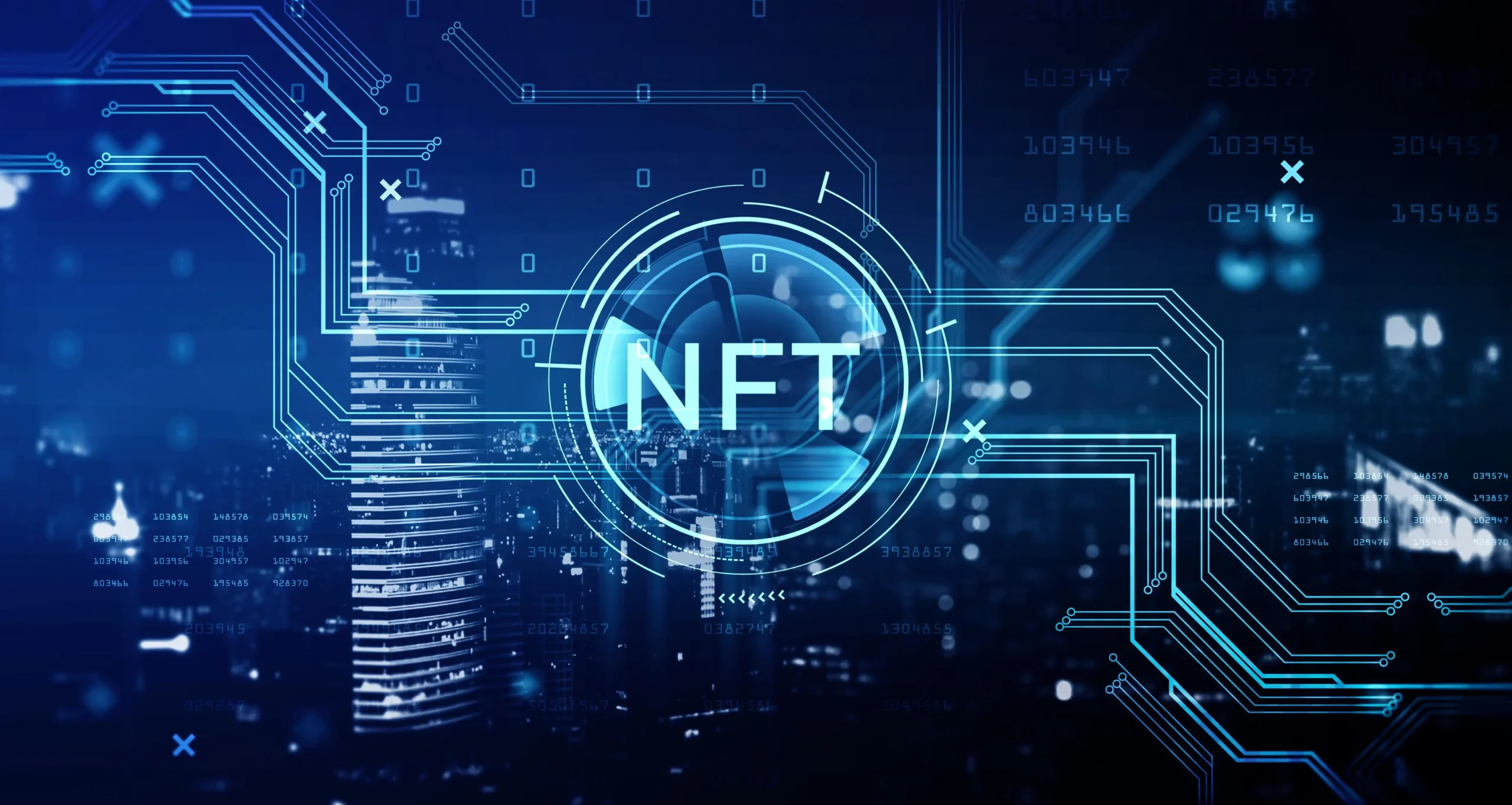
1. MetaMask – The Industry Standard for Web3 Interactions
MetaMask stands as the most widely adopted software wallet in the NFT ecosystem, with over 100 million active users worldwide. This browser extension wallet has become synonymous with Web3 interactions, offering seamless connectivity to virtually every NFT marketplace and decentralized application.
The wallet’s strength lies in its universal compatibility and extensive ecosystem support. MetaMask supports Ethereum and all EVM-compatible networks, including Polygon, Binance Smart Chain, and Avalanche. This multi-chain functionality makes it an excellent choice for collectors who operate across different blockchain ecosystems.
Security features include seed phrase backup, password protection, and hardware wallet integration. Users can connect Ledger or Trezor devices to MetaMask, combining the convenience of a software interface with the security of cold storage. The wallet also offers customizable gas fees and transaction priority settings, crucial for navigating congested networks during popular NFT drops.
MetaMask excels in user experience with its intuitive interface and comprehensive NFT display capabilities. The recent addition of the MetaMask Portfolio dashboard provides a unified view of all your digital assets across supported networks. Educational resources and extensive documentation make it accessible to beginners while offering advanced features for experienced users.
2. Ledger Nano X – Premium Hardware Security for High-Value Collections
The Ledger Nano X represents the gold standard in hardware wallet security for NFT collectors. This cold storage device protects your private keys through a certified secure element chip and offline storage, making it virtually immune to online attacks and malware.
Ledger devices support over 5,500 cryptocurrencies and tokens across 25+ blockchain networks, including all major NFT-supporting chains. The Nano X features Bluetooth connectivity, allowing wireless interaction with mobile devices while maintaining security through the Ledger Live companion app.
The wallet’s secure NFT storage capabilities shine through its integration with popular software wallets like MetaMask. You can use MetaMask as an interface while keeping your private keys secured on the Ledger device. This hybrid approach provides the best of both worlds: convenience and security.
Advanced security features include a tamper-proof design, PIN protection, and recovery phrase backup. The device undergoes rigorous third-party security audits and maintains a transparent approach to vulnerability disclosure. Ledger’s reputation in the crypto community stems from years of proven security performance and continuous firmware updates.
3. Trust Wallet – Mobile-First NFT Management
Trust Wallet has emerged as the leading mobile crypto wallet for NFT enthusiasts, offering native support for multiple blockchains and an intuitive mobile interface. Acquired by Binance, this wallet provides robust functionality while maintaining user control over private keys.
The wallet supports over 70 blockchains and millions of digital assets, making it one of the most comprehensive multi-chain wallets available. Trust Wallet’s NFT gallery feature provides excellent visual organization of your collection, with support for various media types, including images, videos, and audio files.
Decentralized application integration stands out as a key feature, with a built-in dApp browser that connects directly to popular NFT marketplaces. The wallet includes a news section, price tracking, and staking capabilities, creating a comprehensive ecosystem for crypto and NFT management.
Security measures include biometric authentication, encrypted key storage, and recovery phrase backup. The wallet operates as a non-custodial solution, ensuring users maintain complete control over their assets. Regular security updates and a bug bounty program demonstrate Trust Wallet’s commitment to protecting user funds.
4. Phantom Wallet – Solana’s Premier NFT Wallet
Phantom Wallet has become the go-to choice for Solana NFT collectors, offering specialized features optimized for the Solana blockchain ecosystem. This software wallet provides seamless interaction with Solana-based NFT marketplaces like Magic Eden and Solanart.
The wallet’s user interface excels in simplicity and elegance, making it accessible to newcomers while providing advanced features for experienced users. Phantom displays NFTs with high-quality rendering and supports various Solana token standards, including the latest compressed NFT formats that reduce storage costs.
Multi-chain expansion has broadened Phantom’s appeal, with recent additions including Ethereum, Polygon, and Bitcoin support. This evolution transforms it from a Solana-specific solution into a comprehensive multi-chain wallet suitable for diverse NFT portfolios.
Solana blockchain integration provides unique advantages, including near-instant transactions and minimal fees. These characteristics make Phantom ideal for active NFT traders who frequently buy, sell, or transfer assets. The wallet also supports Solana’s innovative features like compressed NFTs and the token-2022 standard.
5. Coinbase Wallet – Institutional-Grade Security Meets User Simplicity
Coinbase Wallet bridges the gap between centralized exchange convenience and decentralized wallet control. Despite sharing the Coinbase name, this wallet operates independently from the exchange, giving users full custody of their private keys and digital assets.
The wallet’s strength lies in its educational resources and user-friendly onboarding process. Coinbase Wallet includes built-in tutorials, security best practices, and clear explanations of complex concepts. This educational approach makes it excellent for newcomers to the NFT space.
Multi-chain support covers Ethereum, Polygon, Avalanche, and other popular networks. The wallet’s dApp browser provides seamless access to NFT marketplaces and DeFi protocols. Integration with Coinbase Pay enables easy funding from traditional bank accounts, simplifying the process of entering the crypto ecosystem.
Security features include cloud backup with encryption, biometric authentication, and hardware wallet compatibility. The wallet’s connection to Coinbase’s extensive security infrastructure provides additional peace of mind, though it maintains the non-custodial nature essential for true ownership of digital assets.
6. Trezor Model T – Open-Source Hardware Excellence
The Trezor Model T represents the pinnacle of open-source hardware wallet technology, offering transparent security through publicly auditable code. This cold storage device provides comprehensive NFT support while maintaining the highest security standards through its open development model.
Trezor’s touchscreen interface sets it apart from other hardware wallets, providing intuitive navigation and transaction confirmation directly on the device. The wallet supports over 8,000 cryptocurrencies and tokens across multiple blockchain networks, making it suitable for diverse NFT collections.
The device’s open-source nature allows independent security verification by researchers and developers worldwide. This transparency has led to rapid identification and patching of potential vulnerabilities, creating a more robust security model than closed-source alternatives.
Integration capabilities extend to popular software wallets, including MetaMask, providing flexible interaction options while maintaining hardware-level security. The Trezor Suite companion software offers comprehensive portfolio management and educational resources for users at all experience levels.
7. Exodus Wallet – Beautiful Interface with Multi-Asset Support
Exodus Wallet combines aesthetic appeal with functional excellence, offering one of the most visually appealing interfaces in the crypto wallet space. This desktop and mobile wallet provides comprehensive NFT support while maintaining simplicity and ease of use.
The wallet’s portfolio visualization features help users track their NFT collections and cryptocurrency holdings through interactive charts and graphs. Exodus supports over 260+ cryptocurrencies and multiple blockchain networks, making it suitable for diversified digital asset portfolios.
Built-in exchange functionality allows direct trading within the wallet interface, eliminating the need for external exchanges for basic trading activities. The wallet partners with various liquidity providers to ensure competitive rates and quick execution of trades.
Educational resources and 24/7 customer support distinguish Exodus from many competitors. The company provides extensive knowledge base articles, video tutorials, and responsive customer service to help users navigate the complex world of cryptocurrencies and NFTs.
8. Rainbow Wallet – Ethereum-Focused Mobile Excellence
Rainbow Wallet targets Ethereum enthusiasts with a mobile-first approach that prioritizes user experience and visual appeal. This iOS and Android wallet provides exceptional NFT display capabilities and seamless interaction with Ethereum-based applications.
The wallet’s strength lies in its intuitive design and smooth user experience. Rainbow automatically detects and displays NFTs from connected addresses, providing high-quality rendering of digital art and collectibles. The interface feels more like a social media app than a traditional crypto wallet.
Layer 2 integration includes native support for Polygon, Arbitrum, and Optimism, providing users with low-cost alternatives to mainnet Ethereum transactions. This multi-layer approach helps users avoid high gas fees while maintaining access to the broader Ethereum ecosystem.
Social features set Rainbow apart, including ENS domain integration and social recovery options. The wallet supports WalletConnect for connecting to desktop dApps while maintaining mobile convenience. Regular updates and active community engagement demonstrate the team’s commitment to user satisfaction.
9. SafePal – Comprehensive Hardware and Software Ecosystem
SafePal offers both hardware and software wallet solutions, providing flexibility for users with different security preferences and budgets. The SafePal S1 hardware wallet combines robust security with an affordable price point, while the software wallet provides convenient mobile access.
The ecosystem approach allows seamless interaction between hardware and software components. Users can manage their NFT collections on mobile devices while keeping private keys secured on the hardware wallet. This hybrid model provides optimal security and convenience.
Multi-chain support spans over 20 blockchains, including Ethereum, Binance Smart Chain, Solana, and Polygon. The wallet’s native support for Binance DEX and other decentralized exchanges facilitates easy trading and portfolio management within a single interface.
SafePal includes unique features like crypto credit card integration and educational content. The wallet’s learning center provides articles, videos, and tutorials to help users understand NFTs, DeFi, and blockchain technology.
10. Enjin Wallet – Gaming NFT Specialist
Enjin Wallet specializes in gaming NFTs and blockchain gaming ecosystems, offering features specifically designed for interactive digital assets. This mobile wallet supports QR code scanning for easy NFT transfers and includes gaming-specific functionalities.
The wallet’s gaming focus extends to support for various gaming tokens and NFT standards popular in blockchain games. Enjin provides seamless integration with gaming platforms and marketplaces, making it ideal for gamers who collect in-game assets as NFTs.
Smart contract interaction capabilities allow users to participate in complex gaming protocols and DeFi applications. The wallet includes built-in security features like biometric authentication and encrypted key storage, ensuring gaming assets remain protected.
Educational resources focus on blockchain gaming and NFT utilities in interactive entertainment. Enjin regularly updates the wallet to support new gaming platforms and emerging NFT standards in the rapidly evolving gaming sector.
11. Atomic Wallet – Decentralized Exchange Integration
Atomic Wallet combines wallet functionality with built-in decentralized exchange capabilities, allowing users to trade NFTs and cryptocurrencies without leaving the application. This desktop and mobile wallet supports over 500+ digital assets across multiple blockchains.
The wallet’s atomic swap technology enables peer-to-peer trading without centralized intermediaries. This feature provides enhanced privacy and reduced counterparty risk compared to traditional exchanges. Atomic Wallet maintains complete user control over private keys and assets.
Staking capabilities allow users to earn rewards on supported cryptocurrencies while holding their NFTs in the same wallet. This multi-functional approach provides comprehensive digital asset management in a single application.
Security measures include encrypted private key storage, password protection, and backup seed phrase recovery. The wallet undergoes regular security audits and maintains transparency about its security practices and procedures.
12. Zengo Wallet – Keyless Security Innovation
Zengo Wallet revolutionizes wallet security through keyless technology that eliminates the traditional seed phrase requirement. This innovative approach uses advanced cryptography to provide security without the risk of losing access due to forgotten or stolen recovery phrases.
The biometric authentication system uses facial recognition and other biometric markers to secure wallet access. This approach eliminates the single point of failure associated with seed phrases while maintaining the security benefits of non-custodial wallets.
Three-party computation cryptography distributes key management across multiple parties, ensuring no single entity can access user funds. This innovative security model provides institutional-grade protection while maintaining user-friendly operation.
Multi-asset support includes popular cryptocurrencies and NFT-compatible blockchains. The wallet’s intuitive interface makes it accessible to beginners while providing advanced features for experienced users who prefer innovative security approaches.
Key Features to Consider When Buying NFT Wallets
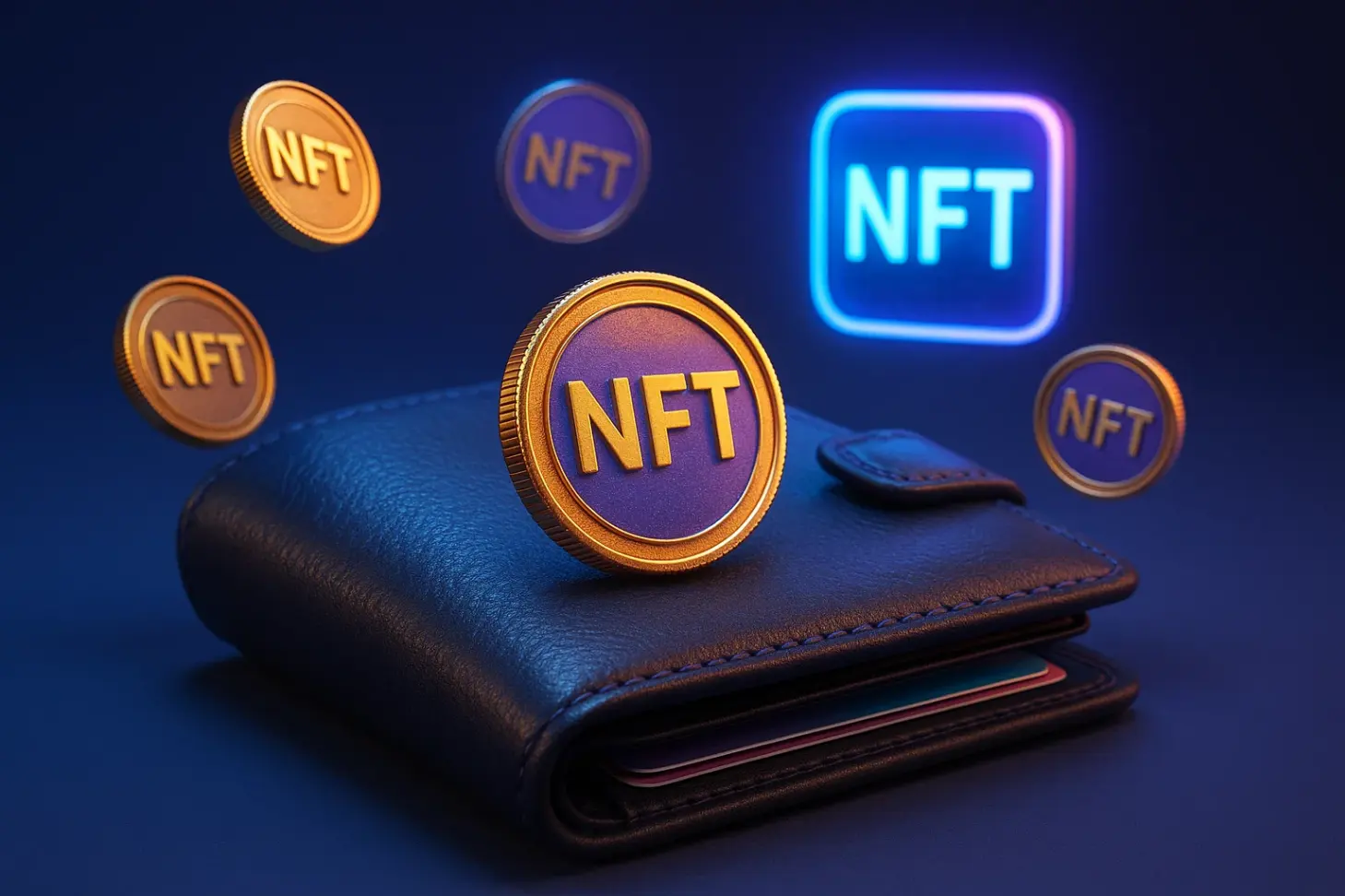
Security and Private Key Management
Private key security forms the foundation of any reliable NFT wallet. The best cryptocurrency wallets employ various security measures to protect these critical cryptographic codes that control access to your digital assets. Hardware wallets provide the highest level of security by storing private keys in isolated, tamper-resistant environments that never connect directly to the internet.
Multi-signature support adds an extra layer of security by requiring multiple cryptographic signatures to authorize transactions. This feature is particularly valuable for high-value NFT collections or shared ownership scenarios. Some secure NFT wallets also implement time-locked transactions and spending limits as additional protective measures.
Recovery mechanisms vary significantly between wallet types. Traditional wallets use 12-24 word seed phrases that must be stored securely and never shared. Innovative solutions like Zengo eliminate seed phrases through advanced cryptographic techniques, while others offer social recovery through trusted contacts.
Two-factor authentication and biometric security features provide additional layers of protection against unauthorized access. The most secure wallets combine multiple authentication methods, creating comprehensive security profiles that adapt to different threat scenarios and user preferences.
Multi-Chain and Cross-Chain Compatibility
Multi-chain support has become essential as the NFT ecosystem expands across various blockchain networks. Leading blockchain wallets now support Ethereum, Polygon, Solana, Binance Smart Chain, and emerging networks like Avalanche and Flow. This compatibility allows collectors to manage diverse NFT portfolios from a single interface.
Cross-chain functionality enables asset transfers between different blockchain networks, though this capability varies significantly between wallet providers. Some wallets include built-in bridge protocols, while others integrate with external bridging services to facilitate cross-chain movements.
Network switching should be seamless and intuitive, allowing users to change between different blockchain networks without complex configuration processes. The best NFT wallets automatically detect network requirements for specific NFTs and suggest appropriate network connections.
Gas fee optimization features help users navigate the complex landscape of transaction costs across different networks. Advanced wallets provide fee estimation, priority setting, and alternative network suggestions to minimize costs while ensuring timely transaction processing.
User Interface and Experience Design
Intuitive design significantly impacts the wallet user experience, especially for newcomers to the NFT space. The best crypto wallet apps prioritize clean, accessible interfaces that don’t overwhelm users with technical complexity while still providing access to advanced features when needed.
NFT display capabilities vary dramatically between wallet providers. Superior wallets render high-quality images, videos, and other media types associated with NFTs. Some include gallery views, collection organization tools, and social sharing features that enhance the collecting experience.
Mobile optimization has become crucial as more users manage their NFT collections on smartphones and tablets. Leading mobile crypto wallets provide responsive designs, touch-friendly interfaces, and offline viewing capabilities for NFT collections.
Accessibility features ensure wallets remain usable by individuals with different abilities and technical expertise levels. This includes support for screen readers, high contrast modes, and simplified interaction patterns that reduce complexity for casual users.
Integration with NFT Marketplaces and dApps
Marketplace connectivity determines how easily users can buy, sell, and trade NFTs directly from their wallets. The best NFT wallets integrate seamlessly with popular platforms like OpenSea, Rarible, SuperRare, and Foundation, often providing one-click purchasing and selling capabilities.
dApp browser functionality allows users to interact with decentralized applications directly through their wallet interface. This feature is essential for accessing new NFT projects, participating in token launches, and engaging with DeFi protocols that involve NFT collateral.
WalletConnect support enables secure connections between mobile wallets and desktop-based dApps. This protocol has become the standard for cross-platform wallet connectivity, allowing users to maintain their preferred mobile wallet while accessing desktop-exclusive applications.
Smart contract interaction capabilities allow advanced users to interact directly with blockchain protocols and custom NFT projects. This functionality is crucial for participating in cutting-edge NFT experiments and emerging protocols that haven’t yet achieved mainstream marketplace integration.
Security Best Practices for NFT Wallet Management
Protecting Your Private Keys and Seed Phrases
Seed phrase security represents the most critical aspect of NFT wallet protection. These 12-24 word recovery phrases provide complete access to your wallet and should never be stored digitally or shared with any person or service. The best practice involves writing seed phrases on paper or metal backup devices and storing them in secure, physically separated locations.
Digital storage of seed phrases creates significant security risks. Avoid saving recovery phrases in cloud storage, email accounts, or any internet-connected device. Hackers frequently target these storage methods, and a compromised seed phrase results in immediate loss of all wallet contents, including valuable NFTs.
Physical security measures include fireproof safes, safety deposit boxes, and geographically distributed storage locations. Some collectors use metal seed phrase storage devices designed to survive extreme conditions. Consider the value of your NFT collection when determining appropriate security measures.
Access control should limit who knows about your wallet’s existence and location. Avoid discussing your NFT holdings or wallet security measures in public forums or social media. Social engineering attacks often begin with publicly available information about collectors’ assets and security practices.
Recognizing and Avoiding Common NFT Scams
Phishing attacks target NFT collectors through fake websites that mirror legitimate marketplaces and wallet interfaces. Always verify URLs carefully and bookmark authentic sites. Secure NFT wallets often include phishing protection features that warn users about suspicious websites and transactions.
Fake NFT projects proliferate across social media and messaging platforms. Scammers create convincing fake collections using stolen artwork and promise unrealistic returns or utility. Research projects thoroughly, verify team credentials, and be skeptical of projects that pressure immediate purchases or promise guaranteed profits.
Social media scams frequently involve impersonated celebrities, influencers, or project teams offering free NFTs or exclusive access. Legitimate projects rarely require immediate action or request private key information. Be particularly cautious of unsolicited direct messages offering NFT opportunities.
Smart contract vulnerabilities can be exploited by malicious actors who create NFTs or marketplaces with hidden functions that drain connected wallets. Only interact with verified contracts and established marketplaces. Hardware wallets provide additional protection by requiring manual transaction confirmation for all smart contract interactions.
Regular Backup and Recovery Procedures
Backup verification should occur regularly to ensure recovery phrases remain accurate and accessible. Test recovery procedures using small amounts or test networks before relying on backups for valuable collections. Many users discover backup failures only when attempting emergency recovery.
Multiple backup locations provide redundancy against loss, theft, or destruction. Store backups in different geographical locations and consider giving trusted family members sealed backup copies with clear instructions for access only in emergencies.
Recovery testing involves periodically restoring wallets from backup to verify the process works correctly. This testing should occur in safe environments using separate devices or test networks to avoid accidentally compromising active wallets during the testing process.
Hardware wallet backup procedures differ from software wallets and often involve additional security measures like passphrase protection. Understand the specific backup and recovery requirements for your chosen wallet type and follow manufacturer recommendations precisely.
Future Trends in NFT Wallet Technology
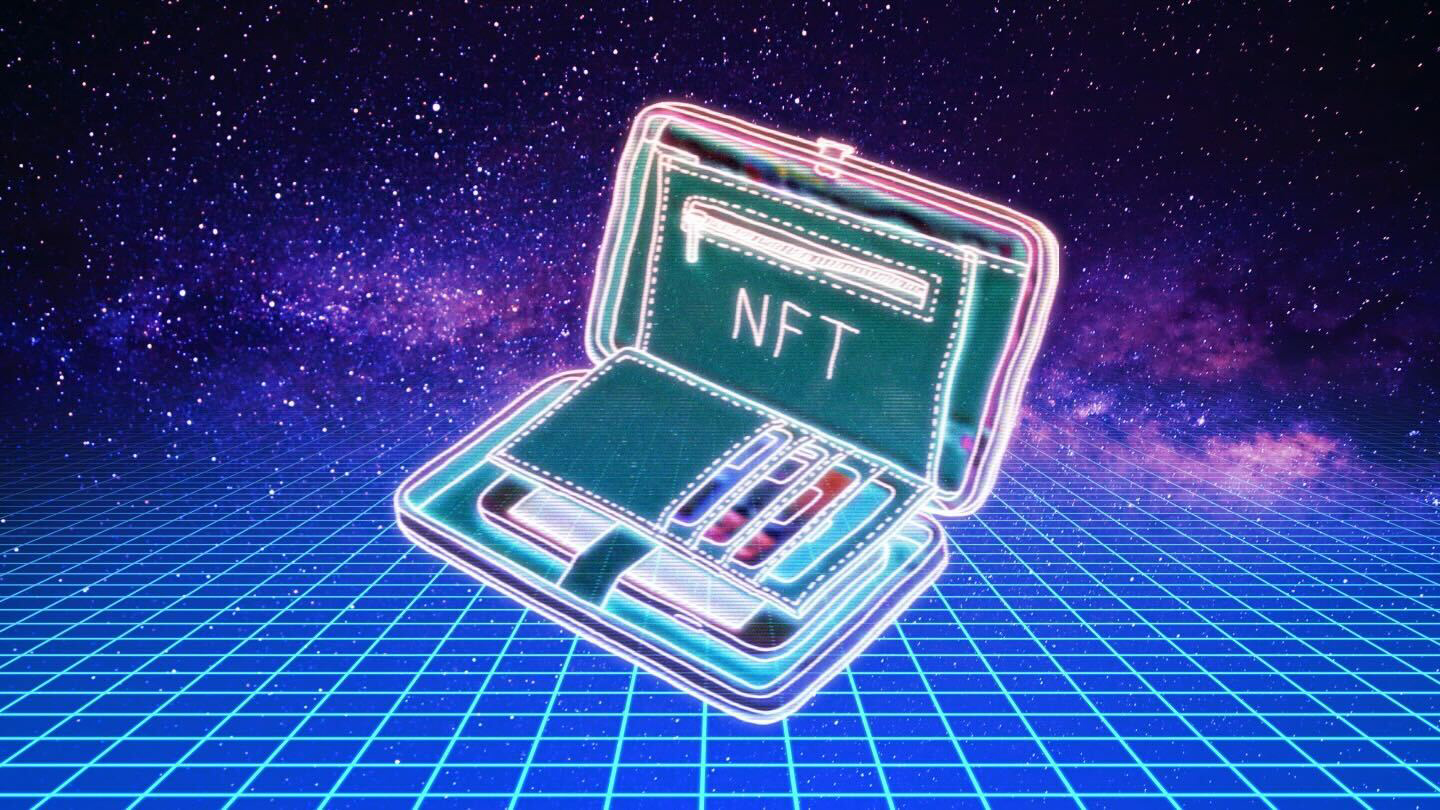
Emerging Features and Technologies
Layer 2 integration continues advancing with wallets incorporating native support for Ethereum scaling solutions like Polygon, Arbitrum, and Optimism. These integrations reduce transaction costs and improve user experience while maintaining security and compatibility with the broader Ethereum ecosystem.
Artificial intelligence features are beginning to appear in advanced wallets, providing personalized portfolio recommendations, fraud detection, and automated collection organization. AI-powered analytics help users understand market trends, optimize their holdings, and identify potentially valuable NFT opportunities.
Augmented reality and virtual reality integration represent the next frontier for NFT wallet technology. Future wallets may provide immersive viewing experiences for 3D NFTs, virtual gallery spaces, and social interaction features that enhance the digital collecting experience.
Biometric authentication continues evolving beyond simple fingerprint and facial recognition to include voice patterns, typing rhythms, and other unique user characteristics. These advances improve security while reducing reliance on traditional passwords and PIN codes.
Integration with Decentralized Identity and Social Features
Decentralized identity protocols are increasingly integrated with NFT wallets, allowing users to create portable digital identities tied to their NFT collections. These systems enable reputation building, social verification, and cross-platform identity without relying on centralized authorities.
Social recovery mechanisms use trusted contacts to help recover wallet access without traditional seed phrases. This approach reduces the risk of permanent asset loss while maintaining decentralized principles and user control over assets.
Community features within wallets enable collectors to share collections, discover new projects, and connect with other enthusiasts. These social elements transform wallets from simple storage tools into community platforms that enhance the NFT collecting experience.
Collaborative ownership features support shared NFT ownership and fractional trading. Advanced wallets are developing tools for group purchasing, shared custody, and democratic decision-making for collectively owned digital assets.
Also Read: Ultimate NFT Marketplace Comparison Guide 2025: Best Platforms Reviewed
Conclusion
Selecting the right NFT crypto wallet from the 12 best options available in 2025 requires careful consideration of your specific needs, security preferences, and usage patterns. Hardware wallets like Ledger Nano X and Trezor Model T provide maximum security for high-value collections, while software wallets such as MetaMask and Trust Wallet offer convenience and seamless marketplace integration.
Mobile-focused solutions like Phantom and Rainbow excel in user experience and accessibility, making them ideal for active traders and newcomers alike. The best cryptocurrency wallets for NFTs combine robust security measures, multi-chain compatibility, intuitive interfaces, and comprehensive marketplace integration to provide superior digital asset management experiences that never fail to protect and serve their users’ evolving needs.

